The cheetah is a wild cat that lives in Africa and Asia. It prefers to live in open areas like savannahs with abundant prey but can also be found in mountain terrain and dense woodland.
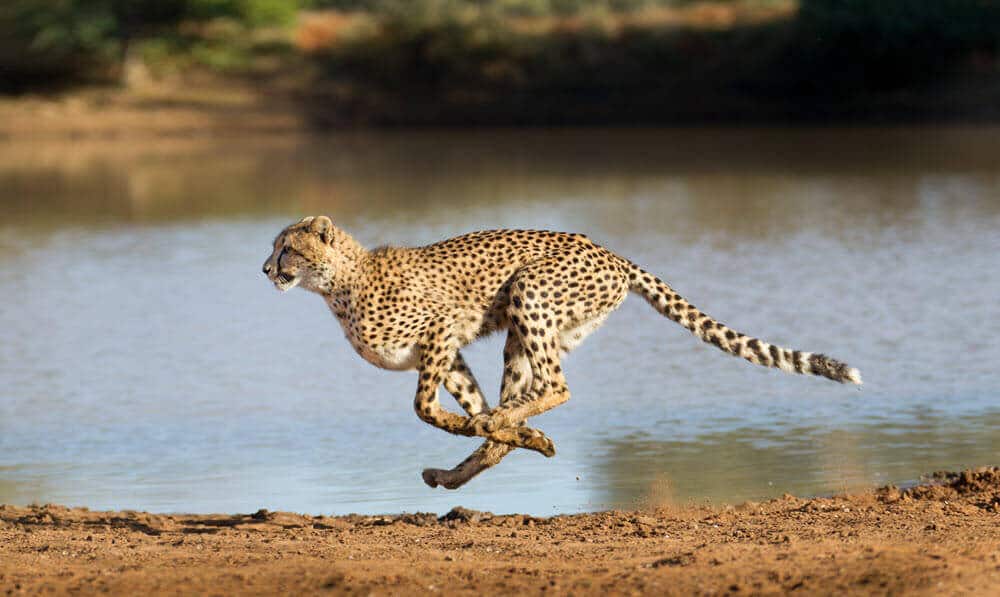
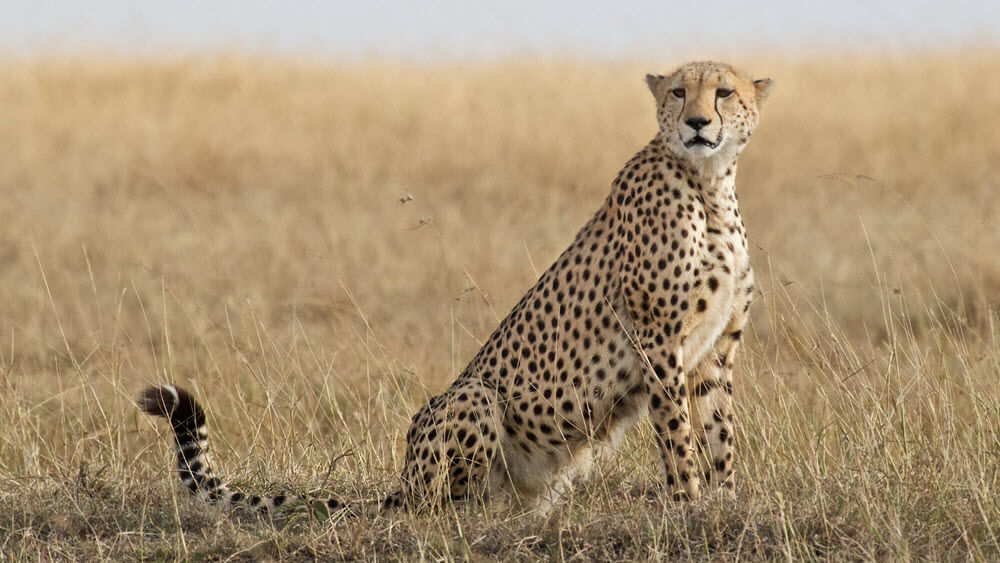
Scientific Name: Acinonyx jubatus
Conservation Status: Both the Asiatic and Northwest African cheetah are Critically Endangered, the Northeast African cheetah is listed as Endangered as of 2023, and the Southeast African cheetah is Vulnerable.
Subspecies: There are currently four recognized subspecies of cheetah:
- Asiatic cheetah (Acinonyx jubatus venaticus) – Critically Endangered, only found in Iran.
- Northwest African cheetah (Acinonyx jubatus hecki)
- Northeast African cheetah (Acinonyx jubatus soemmeringii)
- Southeast African cheetah (Acinonyx jubatus jubatus)
Meaning of the name: The name cheetah comes from the Sanskrit word citrakayah (“citra” means displaying different spots and streaks, and “kaya” means body).
Lineage: The cheetah belongs to the Puma Lineage, which is made up of the genera: Acinonyx, Herpailurus and Puma. There are three total species in the Puma lineage, the cheetah, jaguarundi and cougar.
Some interesting cheetah facts
- The cheetah runs faster than any other land animal, reaching up to 75 mph.
- They have large nostrils and a large heart and lungs that make it easier for them to take in oxygen.
- Cheetahs have fewer whiskers than other cats.
- The cheetah is related to the cougar and jaguarundi.
- Cheetahs will stalk, chase, and then trip their prey.
- A female cheetah will move her cubs daily to protect them from predators.
- Cheetahs purr like house cats.
- Cheetahs can go for up to three or four days without water.
- They have exceptional eyesight during the day but don’t see well at night.
- Every cheetah has a different pattern of spots on their fur.
- Cheetahs will hunt during the day to avoid competing for food with other animals.
- Cheetahs can accelerate from 0 to 62 mph in three seconds.
- The cheetah uses its claws to grip the ground when running.
- Cheetahs have non-retractable claws like dogs.
- The cheetah’s shoulder blade does not attach to its collarbone, which helps the shoulders move freely.
- At the end of the cheetah’s tail is a bushy tuft.
- Cheetahs get tired quickly. They usually stop and rest if they can’t catch their prey after a minute or so.
- The cheetah’s tail helps it steer at high speeds.
- Female cheetahs usually live alone.
- Cheetahs mate all year long.
- Cheetah cubs live in concealed nests until 6 to 8 weeks old.
- The female cheetah’s tail is also used to let her cubs know where she is when they are walking through tall grass
- The pads of a cheetah’s foot are hard and not as round as other wild cats.
- Cheetah cubs leave their mother at around 18 months of age.
More about cheetahs
Cheetahs hunt during the day to avoid competing for food with other carnivores, such as leopards, lions, and hyenas. They are the fastest animals on earth.
Like many wild cats, they have lost most of the land (over 75%) they used to inhabit.
Origin and history of cheetahs
It is believed that cheetahs began appearing in Africa between 7.5 and 26 million years ago. However, more recent research shows that their last common ancestor lived in Asia 11 million years ago. Cheetahs could once be found throughout Africa and the Middle East.
Today, the Southeast African cheetah has the largest population. As of 2016, approximately 4,000 Southeast cheetahs were found throughout Angola, Botswana, Mozambique, Sambia, and South Africa.
As of 2022, there were only 12 Asiatic cheetahs in existence. In 2016, the Northwest cheetah population was less than 200 and the Northeast African cheetah population was less than 240.
Cheetahs are not aggressive towards humans. Evidence shows they were first tamed as pets in Egypt over 3000 years ago and were common royal pets from the 16th to 11th centuries BC. Middle Eastern were hunting with Cheetahs around the 7th Century.
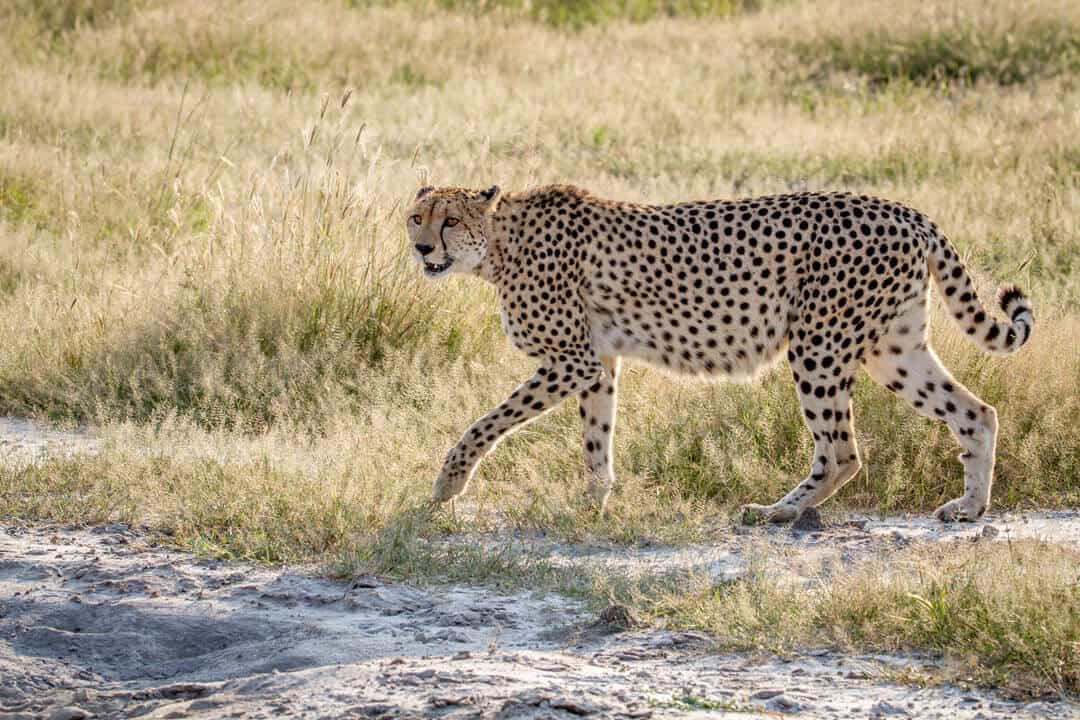
What cheetahs look like
Cheetahs have small chests, tiny waists, and small heads.
Adults can weigh up to 160 lbs. Their body is 43 to 59 inches long, with a tail that is an additional 2 to almost 3 feet long. The long tail helps the cheetah make quick turns when the cat is running. Males are somewhat bigger than female cheetahs. The cats have strong back legs and muscles, which enable them to move extremely fast.
The cat’s fur is short and coarse, tan in color, and covered with spots. At the end of the cat’s tail, the spots merge into several dark rings. Black stripes that look like tears run from the corner of the cheetah’s eyes to the side of its nose and mouth. Their spot patterns are unique for each cat. Because of their coloring, they are often mistaken for leopards. Rarely the fur will be black, white, or grey.
King cheetahs, with their larger black spots that have merged, are a rare and unique sight in the wild. Once believed to be a separate subspecies, the King Cheetah is an African cat with a mutation in the pattern of its fur.
Where cheetahs live
Cheetahs inhabit the eastern and southern regions of Africa, and there are also some remaining populations in Asia (Iran, Turkmenistan, and Afghanistan). Depending on their location, a cheetah’s territory can range from 13 to over 60 square miles. Only males establish a territory, which they mark with urination. Females have home ranges and will often visit male territories.
Cheetah behavior
The cheetah is known for being the world’s fastest land animal. It can reach speeds of up to 75 mph when racing across open land.
How cheetahs communicate
Cheetahs purr, chirp, yowl, growl, hiss, spit, and chur, but they do not roar. Chirping is the sound a cheetah mother makes when trying to find her cubs.
Hunting and food
The cheetah’s diet varies depending on where it lives. They will eat hares, guinea fowl, gazelle, springbok (an antelope/gazelle), and the Impala. Sometimes, cheetahs will eat zebras and wildebeests.
Cheetahs hunt in the early morning and at dusk when there is still some light, compared to other cats, which are nocturnal hunters. This is because the cat hunts by sight instead of smell. They are not aggressive cats, and their kill will often be taken by another predator.
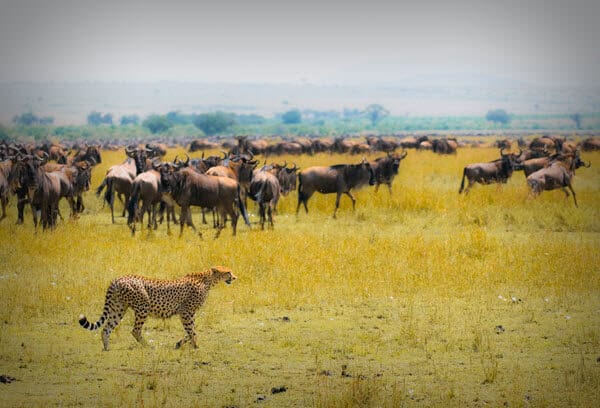
Mating, reproduction and lifespan
Females will usually have had their first litter by the time they are two years old. Mating occurs all year long with different males. A female will have between three to five cubs at a time but can also have as many as nine. Cubs are grey, with woolly hair (also called a mantle) running down their back.
The female raises the cubs on her own and frequently changes the location of her den to keep them safe. However, a high percentage of cubs are killed by other predators.
At around 18 months, the mother leaves the cubs, and the siblings form their own group. Within a few years, the young females with leave the group. The remaining young males will stay together for the rest of their lives. Sometimes a single young male without siblings will join another group of males.
Cheetahs can live up to 12 years in the wild and 20 years in captivity.
Cheetah conservation issues
Cheetah conservation threats include habitat loss, hunting and reduction in prey. Cheetah populations are also becoming more fragmented. In 2017, 20 years after they were last seen in the area, African Parks reintroduced seven cheetahs into Liwonde National Park. In 2023, South Africa signed an agreement with India to provide 12 cheetahs a year for reintroduction in Kuno National Park.
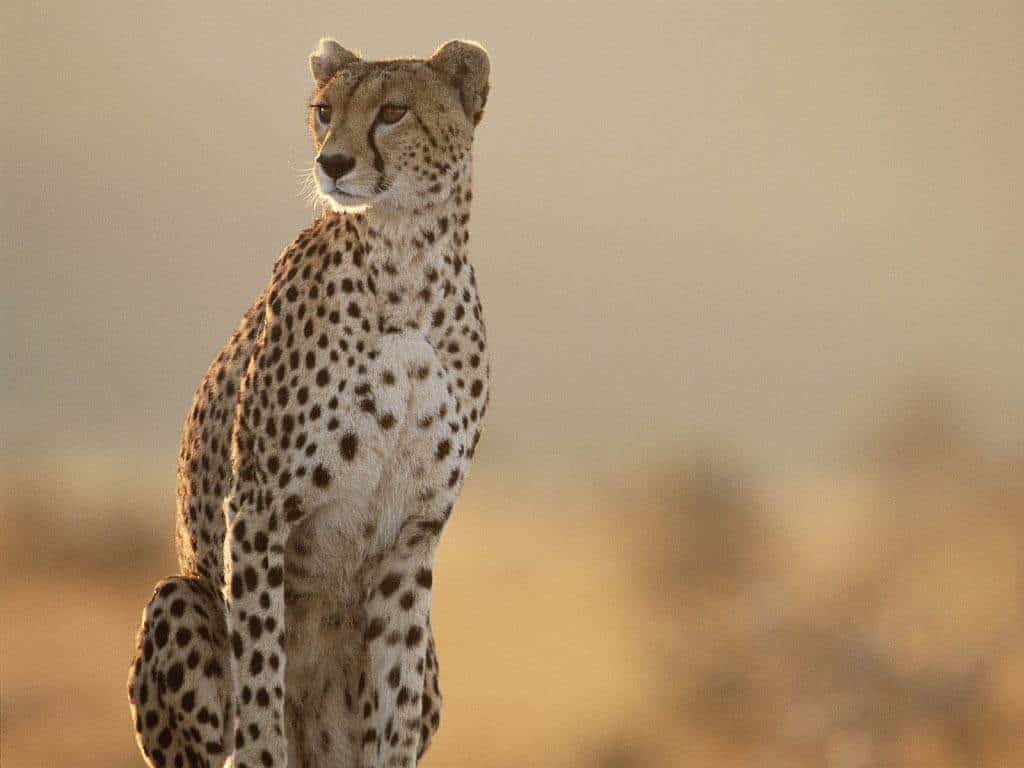
Cheetahs in culture
Throughout history, cheetahs have been a symbol of royalty in many different cultures. They appear in art, literature, rituals, and religion. Cheetahs were also kept as pets and used for hunting. Domesticated cheetahs represented status and wealth in Italy, Iran, India, and Russia.
Africa
In African culture, the cheetah is more than just a symbol of agility and speed. It is a part of their rituals, with African healers using cheetah footbones to represent the cheetah’s agility. The Zulu folk story of the cheetah’s stained cheeks further illustrates its cultural significance. In the story, a dishonorable hunter takes the cubs of a female cheetah. The villagers take the cubs from the hunter and return them to the cheetah.
Egypt
In ancient Egypt, cheetahs were kept as pets and used for hunting. The cat goddess Mafdet frequently had a cheetah’s head. Mafdet was the goddess of law, justice, and protection.
Image: A prince hunting with a cheetah.
Greece
Cheetahs were not native to ancient Greeks, but they were known about through interaction with other cultures. Below is an image of Dionysos (the god of winemaking and vegetation) riding a cheetah. The image is part of the mosaic floor in the “House of Dionysos” at Pella, Greece. The house is believed to have been built at the end of the 2nd century A.C.
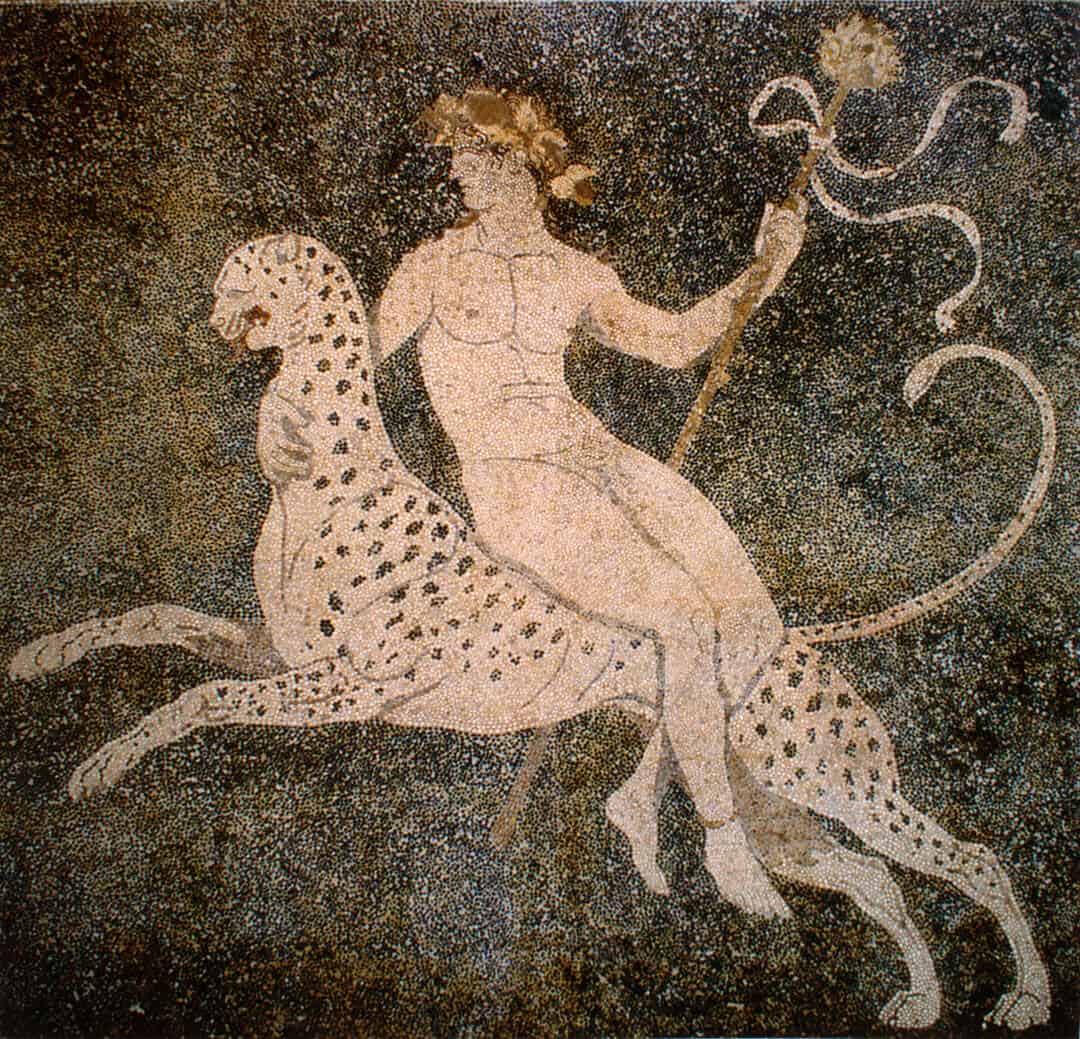
Research, references and quotes
“Today’s wild cheetah population is estimated at 7100 adult and adolescents, a 90% reduction from a century ago, and a range reduction of 9%. Over 80% live outside protected areas where human-wildlife conflict occurs.” – 2019 Cheetahs Race for Survival: Ecology and Conservation | Marker
Malawi Reintroduction Program: “Within 2 years of reintroduction, the newly established population consisted of 14 cheetahs, with demographic attributes similar to those recorded in the source populations. Based on individual settlement, survival and reproduction rates, we deemed this reintroduction successful in re-establishing a breeding population of cheetahs in Liwonde.” – 2022 Assessing the success of the first cheetah reintroduction in Malawi | Sievert, Fattebert et al.

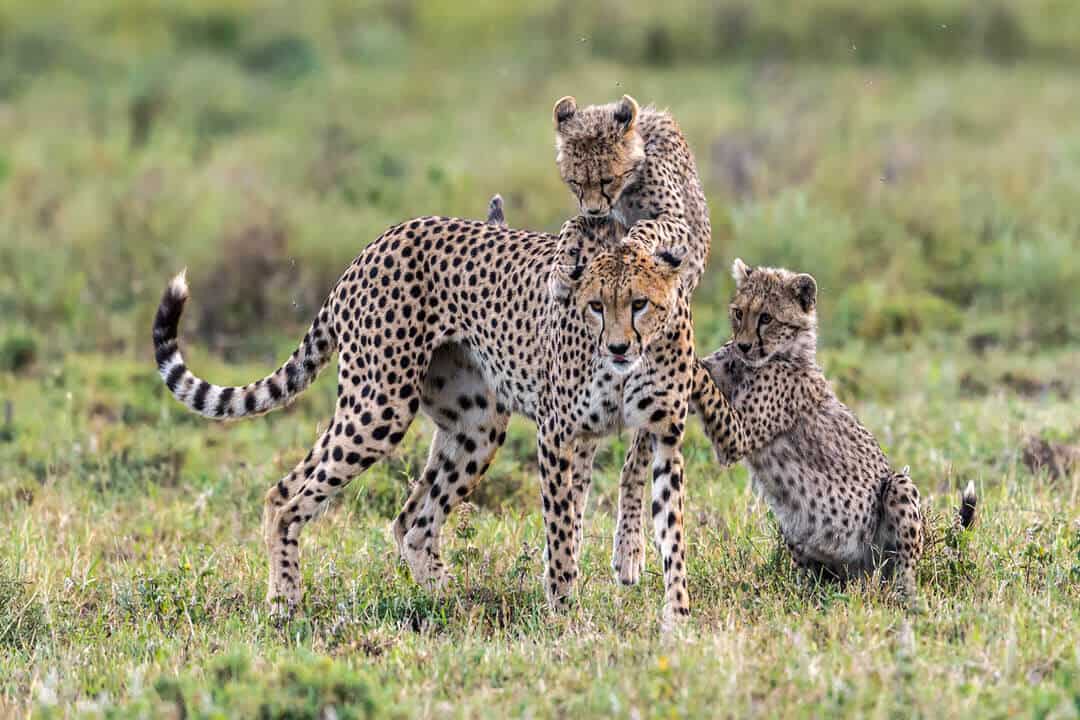
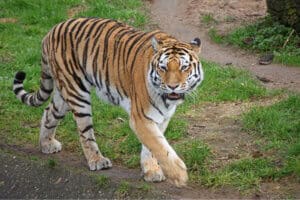
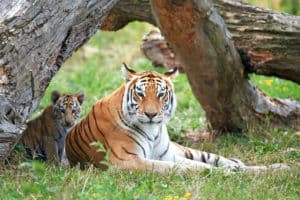
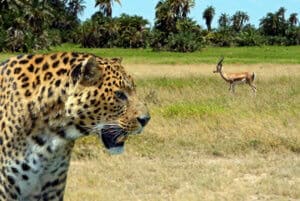

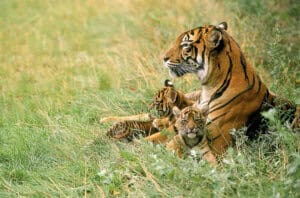

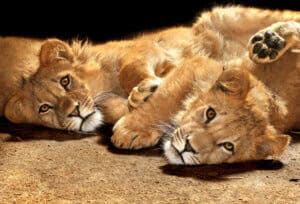
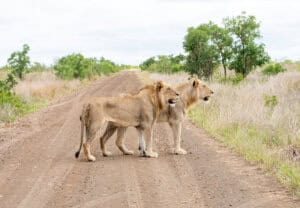
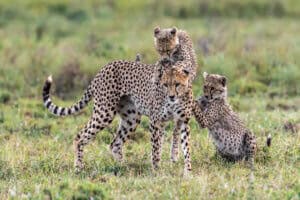


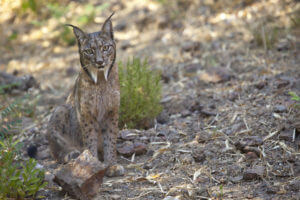




If you look up “big cat” on Wikipedia, you will see the expanded definition, “tiger, lion, jaguar, leopard, and show leopard, as well as the non-pantherine cheetah and cougar.”
Cheetahs are actually in the small cat category along with Cougars (Pumas). They cannot roar and do purr. They are second largest of the small cats, 2nd only to the Cougar who is the largest of the small cats.
nice and complete information about cheeta।।।।